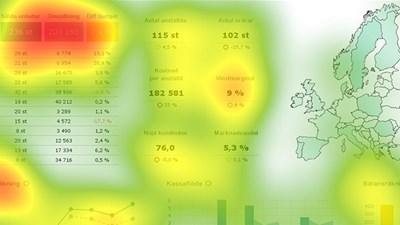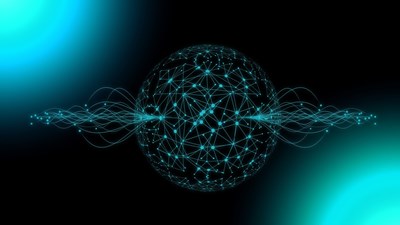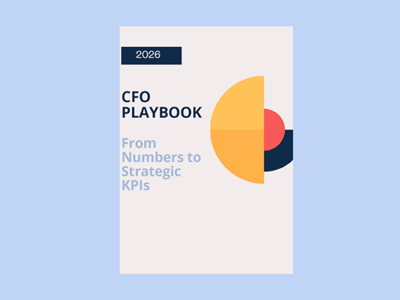
A Practical Guide to the 3‑Statement Model for Better Financial Forecasting
Financial forecasting is critical for any business that wants to anticipate and adapt to change. However, finance teams continue to report insufficiencies due to fragmented models and manual processes.
This is where the 3-statement financial model emerges as the definitive solution. It is a powerful tool that integrates a company’s core financial statements to provide a comprehensive and dynamic view of its financial future under different scenarios.
We have prepared this guide to explain what this model is and how it works. There are common challenges that users will encounter, but the right modern software can help build reliable and scalable models.
Why the 3‑Statement Model Matters
The 3-statement model is far more than a routine accounting task. In fact, it serves as a vital strategic asset for any organisation. It's fundamental for financial forecasting because it links key financial metrics into one cohesive framework. This integration ensures that changes in one statement automatically flow through the others, maintaining consistency and accuracy.
This integrated approach also fosters stakeholder alignment by providing investors and management with consistent and transparent projections across all financial dimensions. Furthermore, it supports regulatory compliance by automating adjustments required under accounting standards like GAAP and IFRS, including revenue recognition and lease accounting.
Organisations that adopt integrated three-statement models experience significant benefits, including a substantial reduction in forecasting errors and an acceleration of month-end close processes. It only demonstrates that this model can transform financial forecasting into a reliable and strategic planning tool.
Periodicity in 3-Statement Modelling
Before building the three-statement financial model, your team should decide on the periodicity of the model. There are several options which are determined by the purpose of the model:
Weekly models, like the thirteen-week cash flow, are essential in bankruptcy cases to monitor cash flow and liquidity on a short-term basis.
Monthly models closely track liquidity in restructurings and project finance, but they often rely on private data and consolidate into quarterly reports.
Quarterly models are favoured in equity research and M&A for analysing near-term trends and are usually aggregated into annual forecasts.
Annual models are typically used for DCF valuations and LBOs, covering about five years and often including a “stub period” for recent historical data.
What Are the Three Statements?
Each core element of the 3-statement financial model serves a distinct purpose and is linked together to form a complete financial picture. Hence, when you modify assumptions in one element of the model, you will witness the accurate and consistent influence it has on the other elements. The merging of these three key elements accurately shows the association of multiple items across the financial statement
1. Income Statement
The income statement, also known as a profit and loss statement, summarises a company’s revenues and expenses. It includes historical data for a period of at least three years, showing the net profit or loss. The statements cover a quarterly or annual period and use driver-based assumptions (eg, units sold x price) rather than static growth rates.
The key components included are:
Revenue growth
Cost of goods sold margins
Net income
OPEX ratios
Interest
Taxes
This statement serves as the model’s starting point because profitability affects retained earnings on the balance sheet and cash flows from operations. It's a process where data entry is done manually, or it can also be done through an Excel plugin, which is used to drop the data directly into your program.
2. Balance Sheet
The balance sheet provides a snapshot of the company’s financial position at any given reporting period. It lists assets (what the company owns), liabilities (what it owes), and shareholders’ equity (the residual interest). The entry of the historical data is also done manually or through an Excel plugin.
The balance sheet must always balance: Assets = Liabilities + Equity
Changes in the income statement, such as net profit, affect equity, while cash movements impact asset balances. The balance sheet reflects the cumulative effect of all transactions and forecasts.
3. Cash Flow Statement
The third element of the model is the cash flow statement. There are several key elements to consider when constructing a well-structured cash flow analysis. You should track cash inflows and outflows from operating, investing, and financing activities. It reconciles the income statement’s accrual accounting with actual cash movements.
Cash flow is essential for evaluating a company’s liquidity and its ability to cover short-term financial obligations. This statement directly impacts the balance sheet by updating the cash balance, ensuring that the financial position accurately reflects actual cash movements.
How the 3-Statement Model Drives Smarter Forecasts
The true power of the 3-statement model lies in the linkages between statements. For example, an increase in sales on the income statement raises net income, which increases retained earnings on the balance sheet. If collected in cash, it raises the cash flow from operations on the cash flow statement.
These interconnections allow finance teams to:
Build forecasts that reflect the full impact of assumptions
Quickly test scenarios and see their effects across all financial dimensions
Identify inconsistencies or imbalances early through automatic checks
Provide a reliable basis for budgeting, valuation, and strategic decisions
Common Modelling Challenges
Despite its strengths, building and maintaining a 3-statement financial model comes with challenges that can undermine accuracy and forecast reliability. Every financial team should understand what they are doing before adopting a specific model.
Manual Formula Errors
Manual entry and complex formulas always present a risk and can result in potential errors. A misplaced cell reference or incorrect formula can cascade through the model, causing imbalances and misleading results. For example, missing a line item in a subtotal can distort the entire balance sheet or cash flow statement.
Version Control
Keeping track of the latest model version is difficult with multiple users and iterations. Changes can be overwritten or lost, and this can lead to confusion and errors. This is especially true when collaborating across teams. Many of them have faced challenging situations when they didn't have real-time access to all the changes.
Inconsistent Assumptions
If different parts of the model use inconsistent assumptions (such as varying growth rates or expense projections), the outputs become unreliable. Consistency is key for credible forecasting, but it is easy to lose track as models evolve. Large models can often become overwhelming, which is why it's very important to ensure that all assumption sources are correct.
Time‑Consuming Updates
Manually updating data and formulas across large models is labour-intensive and slow. It can sometimes take weeks to insert all the data by hand, and this can put the teams under pressure, especially when there is an important deadline. This delays decision-making and increases the risk of errors, especially when working with multiple scenarios or frequent reforecasts.
Scalability Constraints
Traditional spreadsheet models struggle to scale as business complexity grows. Adding new business units, products, or geographies can make the model unwieldy and difficult to maintain. A more complex system, like the 3-statement model, is a blessing for teams who work in big enterprises and on demanding projects.

How Modern Software Empowers Your 3‑Statement Model
Modern corporate performance management (CPM) solutions transform the way finance teams build and use 3-statement models. Mercur addresses the core challenges of manual modelling with automation, integration, and real-time collaboration. Among other things, Mercur offers the following:
Using automated data integration, it seamlessly connects to your ERP, sales, HR and other systems. This way, your 3-statement financial model is always up to date with accurate data.
Automated calculations and validation checks ensure your model remains balanced and accurate, even as complexity increases.
Centralised input modules ensure all assumptions are applied uniformly and at the same time, reduce the risk of inconsistencies.
Real-time collaboration allows multiple users to work on the same model simultaneously. It's a great option that eliminates version control headaches and streamlines the approval process.
The flexible architecture supports unlimited users, business units and data sources. This allows you to easily expand your model as your business grows.
Mercur is all about transparency, which is why every change is tracked to provide a clear audit trail and support compliance requirements.
Best Practices for Reliable 3‑Statement Forecasts
Building a strong and reliable 3-statement model requires more than technical skills. It means adopting some of the best practices below, which ensure your forecasts are accurate, scalable, and easy to maintain.
Automate Linkages and Reconciliations
Use software to automate the flow of data between statements, flag imbalances and reconcile differences in real time. Once you establish the linkages, you'll reduce manual errors and ensure that changes in one statement are updated automatically in others to maintain consistency. This, in turn, will help teams to have the latest and most accurate information to work with.
Use Software
Teams should avoid relying solely on spreadsheets for data management. Rather, use modern CPM tools with specialised features for financial modelling. You can automate data integration, version control and scenario management to improve accuracy and efficiency. And the best part is that, instead of doing manual data entry, your team will have more time for analysis and strategic planning.
Implement an Audit Trail
All businesses must maintain a clear record of changes to the model. Implementing an audit trail enhances transparency and supports compliance. Additionally, it allows teams to identify and correct errors quickly.
Use Driver‑Based Assumptions
Base your forecasts on key business drivers rather than hard-coded numbers. Include sales volumes, price changes or headcount. It's an approach that makes your driver-based model more flexible and responsive to changing conditions.
Automate Data Imports
In this digital age, integrating your model with source systems will ensure that timely and accurate data flows into your forecasts. This can be easily accomplished with automation, which teams use to minimise manual errors and ensure the model accurately reflects the latest business realities.
Structure Your Model into Modules
Organisation is always the key to success. It's important to set up your model into logical inputs, calculations and outputs. It's a modular approach that will help the team to have a clear and readable base to work on. This approach makes it easier to troubleshoot, update, and scale your model as the business evolves further.
Optimise Performance and Scalability
It's perfectly fine to start small at the beginning and then build on it as your business grows. However, instead of starting with one option and then realising that it's not the right one for your business, choose solutions that support large and complex models without sacrificing speed or reliability.
Conclusion
The 3-statement model is the cornerstone of effective financial forecasting. Integrating the income statement, balance sheet and cash flow statement provides a comprehensive view of a business's performance and future prospects.
However, building and maintaining these models manually can be error-prone and inefficient. This may include formula errors, version control issues, scalability constraints and much more.
Modern solutions like Mercur give finance teams the right tools to automate, integrate and scale their 3-statement financial models with confidence. Turn your financial forecasting from a time-consuming chore into a strategic asset.
 Blog
BlogWhat Is Planning, Budgeting and Forecasting?
Planning, budgeting and forecasting are rarely static. Shifts in the industry often require you to revisit assumptions, adjust targets and adopt new processes. Learn how to strengthen your approach and stay ahead of change.
 Blog
BlogSave time and create a successful budget process
If you’re working in a large organization, you’re probably aware of how time-consuming the budget process can be. In this article we’ll give you tips on how to save time and still create a successful budget process
 Blog
BlogHow Automated Reporting Will Transform FP&A in 2026
This article highlights the power of report automation, how to implement it in your business and explores any new opportunities for accurate financial analysis in the long run.
 Blog
BlogHow do finance teams track KPIs across the entire organisation?
Learn how finance teams track KPIs across the entire organisation by consolidating data from multiple sources into a unified system like Mercur.
 Blog
BlogTop PowerBI Alternatives in 2025
Explore the top PowerBI alternatives for 2025. Discover how Mercur delivers integrated planning, budgeting and reporting without the high cost and complexity.
 Blog
BlogBoost Report Readability, Engagement, and Decision-Making
In today’s fast-paced business environment, effective reports and dashboards are crucial for decision-making. Our user study using eye-tracking technology revealed seven key insights into what captures attention.
 Blog
BlogA practcial guide to scenario planning
Scenario planning gives you a clear, practical way to test assumptions, spot risks and opportunities, and make better strategic choices so your organisation stays resilient when conditions change.
 Blog
BlogBusiness Budgeting Software: How to Choose the Right One
Choosing budgeting software is partly a finance and partly a strategic decision. The right tool helps organisations organise planning cycles, adapt as the market changes and increase accountability across departments. But not every platform will be a good fit.
 Blog
BlogWhat is Corporate Performance Management? (CPM)
CPM, or Corporate Performance Management, is a process within corporate management aimed at measuring and optimizing the performance of an organization. CPM encompasses a range of activities, including budgeting, planning, forecasting, reporting, and analysis.
 Blog
BlogBest Guide to Improve Your Revenue with Flexible Budgeting
Optimise your expenses with flexible budgeting, and learn how to adjust budget to reflect current business activities, market changes and cost fluctuations.
 Blog
BlogScenario Planning - Better control during uncertain times
Uncertain times create the need for more frequent forecasts and time for analyzing and comparing different future scenarios. We give you 5 tips on how to simulate future scenarios using scenario planning
 Blog
BlogRolling Forecasts: Practical Steps, Benefits, and How to Get Started
Financial planning has changed. Traditional annual budgets can’t keep up with rapid shifts in the market, evolving customer needs, and internal performance dynamics. That’s why many finance teams are turning to a rolling forecast model.
 Blog
BlogBuild Long-Range Planning for Business Success
Discover how effective long-range planning aligns strategy, finance and operations for smarter decisions and sustainable growth.
 Blog
BlogSpreadsheets are not Collaborative Tools
Spreadsheets were never designed for collaboration, yet they are the single most used program among teams and co-workers. They often start out as a quick document for storing, formatting or calculating information but evolve into important documents and are often the core records for an organisation.
 Blog
BlogManagement Reporting Guide: Definition and Tips
Management reporting helps you see what’s really happening in your business. In this guide, we’ll explain what managerial reporting looks like and share practical tips.
 Blog
BlogThe Collaborative, Smarter Budget
In many organisations manual budgeting processes over-burden staff and create masses of data which overwhelms department heads and stops them seeing the bigger picture.
 Blog
BlogWhy is our Excel-based budget always out of date?
Excel creates outdated budgets. Every time someone enters a figure, sends a file, or waits for another department to finish their section, your budget falls further behind reality.
 Blog
BlogFive tips for a successful budget process!
How can you make your budget process more successful and maximise the effort that was invested in creating it? Of course, there are many factors to consider but we’ve chosen to highlight five key areas that will enable and help you create a smoother, value-creating and collaborative budget process.
 Blog
BlogThe Business Benefits of Integrated Business Planning
This blog explores what IBP is and the typical IBP process. We highlight business benefits and how the right software can be a game-changer for your organisation.
 Blog
BlogFP&A Trends Shaping Financial Planning in 2025
Many organisations cope with fragmented planning and data quality issues, which slow down their forecasting cycles. This forces organisations to take practical steps to turn ambition into execution.
 Blog
BlogTop-Down vs Bottom-Up Budgeting
Budgeting aligns resources with strategic goals, and there are two primary approaches: top-down and bottom-up. Which method wroks best?
 Blog
BlogWhy xP&A is a powerful game-changer
The newest iteration of planning, analysis and reporting systems is a powerful game-changer that unites company departments and boosts competitiveness. It’s called xP&A – the abbreviation of extended financial planning and analysis.
 Blog
BlogMastering Spreadsheets
Where many businesses start small, a simple spreadsheet can adequately perform the limited tasks required of it. As the company grows, your spreadsheets can get more complex and harder to manage, by which point it feels like it will be too difficult to move to a different reporting tool.
 Blog
BlogAI in corporate budgeting
Artificial Intelligence (AI) can support decision making in key areas such as budgeting, capital allocation and even corporate strategy and as a result, it is increasingly being deployed in corporate performance management tools (CPM).
 Blog
BlogZero-Based vs. Incremental Budgeting
Budgeting sits at the heart of sound financial management. This is why choosing the right technique is crucial for CFOs – it shapes resource allocation, cost control and strategic agility. Incremental and zero-based budgeting are two leading methods that offer distinct approaches.
 Blog
BlogSpreadsheet Risk Management: Best Practices for 2025
Excel has long been a target for hackers; just one click on a malicious attachment can infect your entire network. So, how can you keep using spreadsheets while not sacrificing your safety?
 Blog
BlogThe Hidden Cost of Data Silos
If you ever feel like your teams speak different languages when it comes to data, it is a classic symptom of data silos. The information gets stuck in one department, system or tool, making it difficult for anyone to see the full picture.
 Blog
BlogBudgeting in a modern world
Thirty years after its debut, Microsoft Excel is still the preferred tool for budgeting and planning projects. However, its popularity is declining, due in most part to the rise of technology and subscription-based pricing for a myriad of SaaS-based products.
 Blog
BlogAI in Finance as a Powerful Tool
In this post, we explore how AI is evolving from a theoretical concept into a valuable resource for decision-making. Get useful insights for finance teams at any stage, from early exploration to actively using AI-powered solutions.
 Blog
BlogHow to get accurate financial reports without waiting for month-end
You don't need to wait until month-end to see accurate financial reports. With modern financial systems you can access up-to-date reports whenever you need them.
 Blog
BlogCFO Playbook - KPIs for 2026
The role of the CFO is changing fast. Today, the finance function is expected to deliver more than reports — it must drive direction, speed and profitability through clear, actionable KPIs. Learn more in this guide.
 Blog
BlogFrom static budgets to agile financial management
Traditional budgeting has long been the cornerstone of financial planning in businesses. But today it can become more of a limitation than a strength. That’s where the concept of Beyond Budgeting comes in.
 Blog
BlogBalancing Profitability and Sustainability
Sustainability has become a central concern for organisations across the world — and the UK is no exception. This evolving landscape places new demands on financial reporting.
 Blog
BlogWhat Is FP&A? Definition, Purpose, and Best Practices
Without solid financial planning and analysis (FP&A), businesses operate in the dark. In this post we go deeper into the process of FP&A and why it’s important for businesses.
 Blog
BlogHow to Effectively Budget with Driver-Based Forecasting
Traditional models of forecasting rely on historical data and beliefs. It uses techniques that identify patterns, which are simple to use. However, with these methods, there are some challenges because they are not dynamic with today’s market, and can’t effectively analyse complex data.
 Blog
BlogAI and Machine Learning, what is it, and why is it important for the future?
Artificial Intelligence and Machine Learning, what is it, and what is the difference?
 Blog
BlogWhat is management reporting?
Management Reporting refers to the process of creating, analyzing, and presenting information about various aspects of an organization's performance to enable decision-makers to make well-informed decisions about the future.
 Blog
BlogSpreadsheets Risk the Future of the Business
Spreadsheets often start as just a list for storing information and there is minimal process documentation, support or maintenance for these worksheets. Despite the fact that desktop applications such as Microsoft Office are included in the standard configuration of users' PCs, very little formal training is ever given to spreadsheet users.
 Blog
BlogHow to succeed with your planning, budgeting, and forecasting process
We know it can be challenging to succeed with your planning, budgeting, and forecasting process. Therefore, we have gathered our best tips for you to succeed!
 Blog
BlogTop 7 Manager KPIs for Financial and Operational Success
In today's post we'll break down why KPIs matter, which ones offer the most insight for finance and executive teams and how to ensure they're actually driving results.
 Blog
BlogCash Flow Forecasting
Inaccurate cash flow forecasting can be a costly mistake for companies. In today’s volatile market, relying on static annual budgets or manual spreadsheets leaves financial leaders without the agility to respond to uncertainty.
 Blog
BlogBetter Revenue Planning
Sales forecasting is the process of predicting future revenue based on past data and trends. Read the blog to learn the best methods to do it right.
 Blog
BlogRisks with working in spreadsheets
Spreadsheets are an essential tool for all types of organisations and businesses rely on them heavily, particularly for financial computations. The most popular spreadsheet program globally is, of course, Microsoft Excel, it’s used by an estimated 750 million people.
 Blog
BlogThe Role of the CFO: Top Priorities and Responsibilities
Today's finance leaders steer more than just budgets and reports. The digital transformation ramps up with the increase of corporate complexity, and so does the role of CFOs.
 Blog
BlogHow EPM Transforms Financial Planning and Forecasting
Struggling to keep plans aligned in a changing market? Discover how EPM helps finance teams move faster, stay accurate and lead with real-time insights.
 Blog
BlogInformed Business Decisions at Maximum Velocity
The ability to process information swiftly is essential. If your business can’t manage your data efficiently, your company’s financial performance will surely underperform. At Mercur we have developed our own database Veloxic which helps Financial Planning and Analysis.
 Blog
BlogBusiness Intelligence Reporting For Finance Teams
The real challenge today isn’t collecting data, it’s making sense of it and fast. Organisations turn to business intelligence (BI) to convert raw data into insight.But how do you actually do it right?
 Blog
BlogHow To Create a Successful Budgeting Process
When done well, budgeting helps organisations stay financially on course, even when things don’t go exactly as planned. Learn how to keep things on track so you avoid surprises and stay focused on your goals.
 Blog
BlogHow can AI help CFOs make better decisions?
Artificial Intelligence (AI) has significant potential to enhance decision-making for Chief Financial Officers (CFOs) by providing data-driven insights, automating routine tasks, and enabling more accurate forecasts.
 Blog
BlogVariance Analysis: A Comprehensive Guide
Senior executives are demanding more detail in their management reports. The amount of data available to finance departments has exploded and decision makers see this as an opportunity to get more insight into how the business is performing.
 Blog
BlogThe Powerhouse of EPM Tools
A business’s success heavily relies on having a strong strategy. However, what's even more important is implementing that strategy while tracking and measuring the performance. This can easily be done by investing in enterprise performance management (EPM) software.
 Blog
BlogAI in Financial Planning: Trends and Next Steps
Discover how finance teams are using AI to drive smarter planning, faster insights, and stronger business decisions.



















































